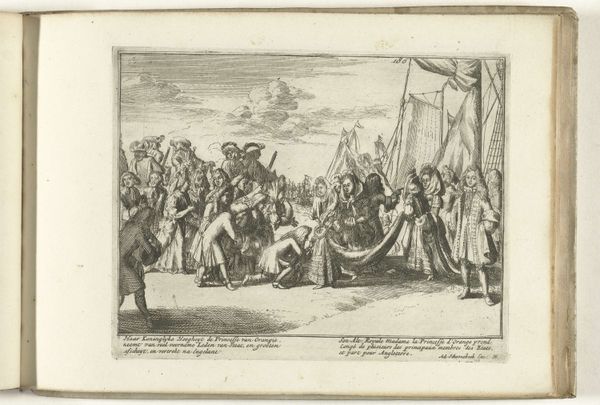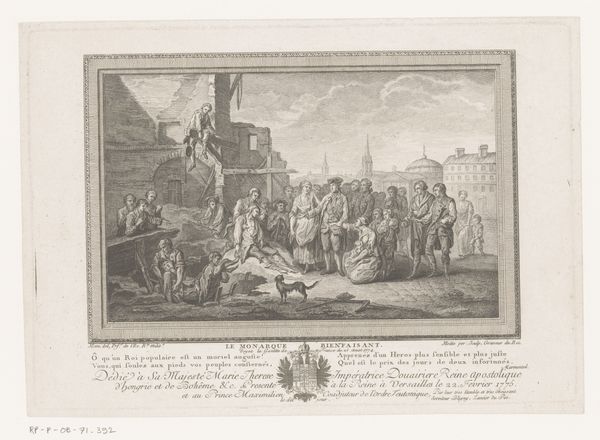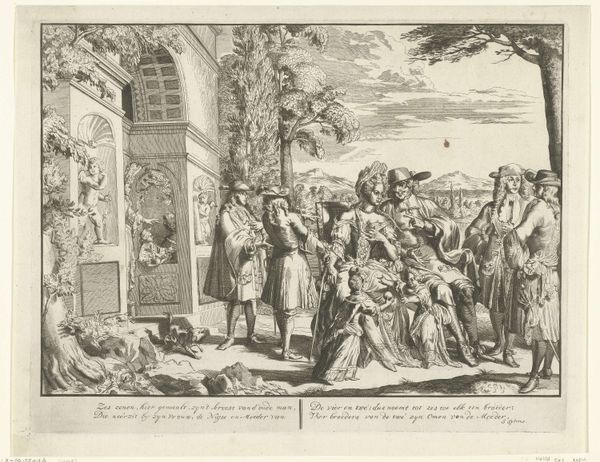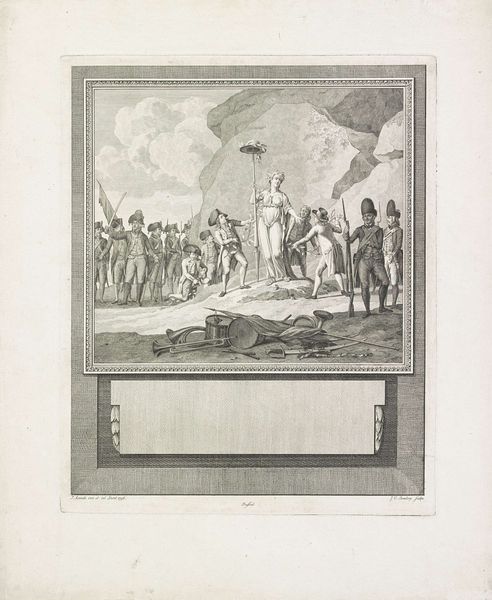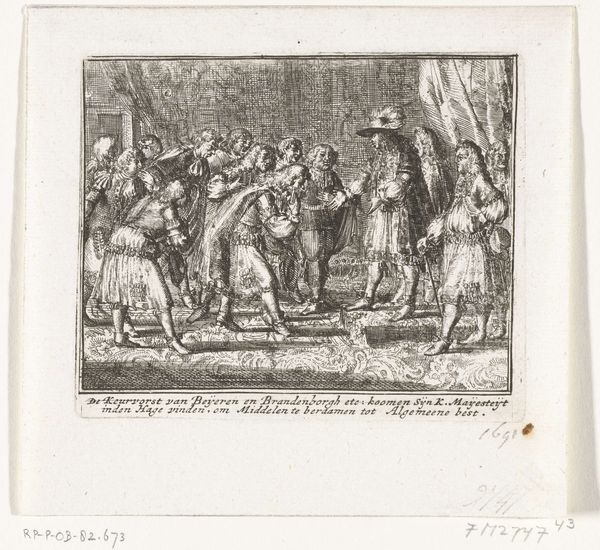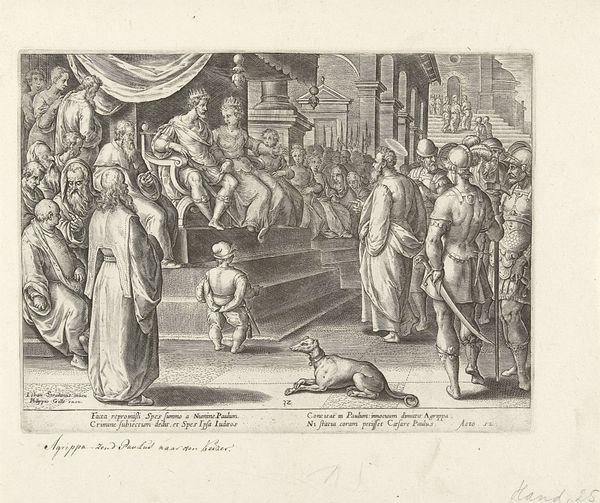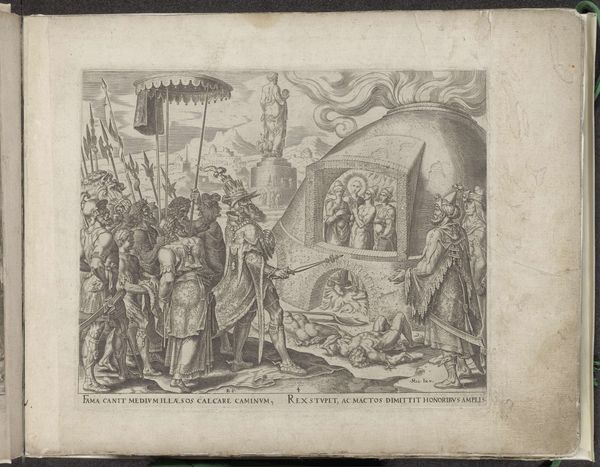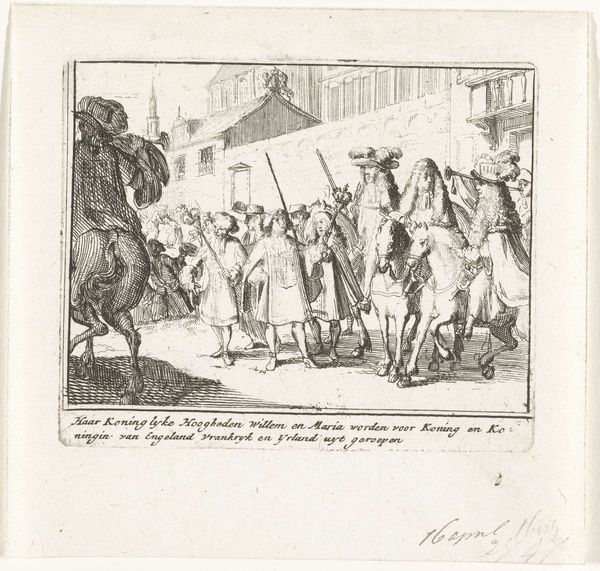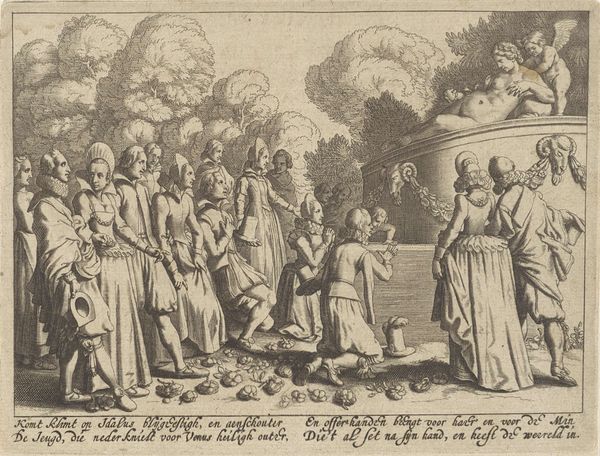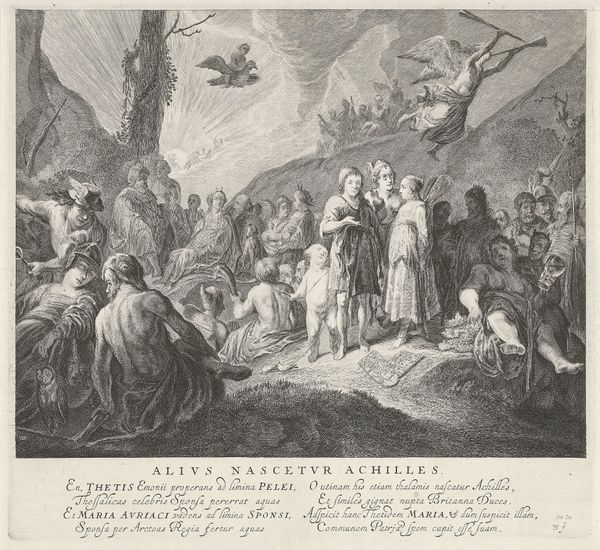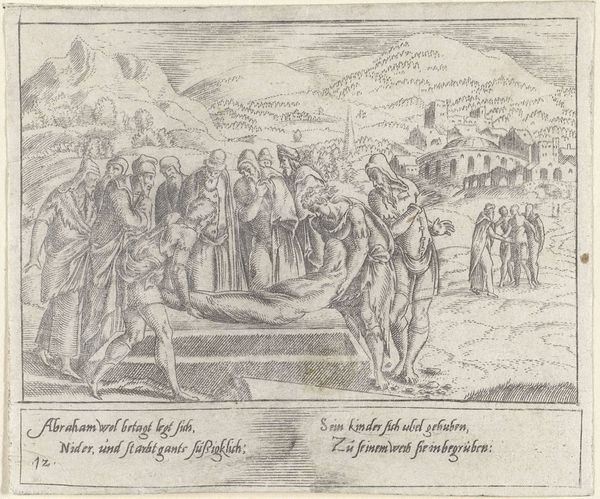
print, engraving
#
narrative-art
#
baroque
# print
#
old engraving style
#
figuration
#
line
#
cityscape
#
history-painting
#
engraving
Dimensions: height 90 mm, width 112 mm
Copyright: Rijks Museum: Open Domain
Editor: Here we have a print, an engraving, titled *Inname van Galway, 1691*—so, the Capture of Galway—created around 1711. The Rijksmuseum attributes it to an anonymous artist. It's quite detailed, showing figures surrendering with the city burning in the background. It seems to portray a significant historical event. What strikes you about this piece? Curator: Well, for one, prints like this were vital forms of mass media. It’s fascinating to consider its original function. This engraving wasn't just art; it was a visual representation, and a political tool disseminating news and shaping public opinion about the Williamite War in Ireland. Editor: Political tool, how so? Curator: Notice how the victorious soldiers are presented, and consider the text in relation to the imagery. Think about the target audience for this print, likely those supportive of William of Orange. The anonymous artist makes choices to portray events in a way that would bolster support for the new regime, constructing a specific narrative of power and authority. What do you notice about the scale of figures, relative to the burning city? Editor: The figures in the foreground, surrendering, are given considerable focus... almost minimizing the devastation in the cityscape. Curator: Precisely! So, consider the choices this artist is making, and who benefits from this selective representation of reality. The focus shifts from the impact on Galway itself to the assertion of British authority. These visual narratives are not neutral; they are deeply embedded in the socio-political landscape of the time. Editor: So, it's less about historical accuracy, and more about promoting a specific point of view? Curator: Absolutely. Analyzing prints like this, we understand how art played an active role in shaping perceptions of historical events. It allows us to ask critical questions about the narratives that gain prominence, and how visual culture influences those narratives. Editor: That gives me a whole new way to appreciate…and question…historical artworks.
Comments
No comments
Be the first to comment and join the conversation on the ultimate creative platform.
